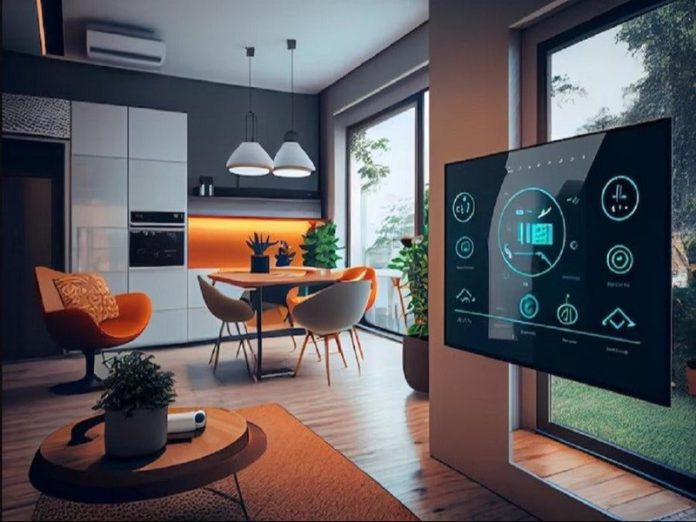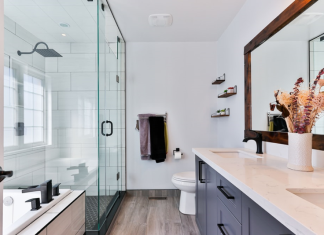The concept of ‘smart homes’ has evolved from a futuristic idea into a tangible reality, significantly impacting how we interact with our living spaces. For homeowners, tech enthusiasts, and environmentally conscious individuals, smart homes represent the epitome of convenience, security, and energy efficiency. This article explores the various facets of smart homes, focusing on how they address common pain points such as energy consumption, security concerns, and the need for convenient, interconnected living.
The Essence of Smart Homes
Smart homes utilize advanced technology to automate and control various household systems and devices. From lighting and temperature control to security and entertainment, smart homes bring a level of sophistication and ease that was once unimaginable.
Integrated Control Systems
At the heart of a smart home is the integrated control system. It allows homeowners to manage various aspects of their home environment through a single interface, often accessible via a smartphone app. This centralization simplifies home management, providing convenience and flexibility.
Enhanced Energy Efficiency
Energy management is a significant concern for modern homeowners. Smart homes address this through intelligent systems like programmable thermostats and automated lighting. These systems optimize energy use, reducing wastage and lowering utility bills.
The Role of Technology in Smart Homes
The advancement of technology is the driving force behind smart homes. The integration of IoT (Internet of Things) devices, AI (Artificial Intelligence), and home automation systems has paved the way for more responsive and intuitive homes.
IoT and Connectivity
IoT plays a pivotal role in smart homes, with numerous connected devices working in tandem to enhance the living experience. Sensors and smart devices collect data on usage patterns and preferences, enabling the home to adapt to the occupant’s lifestyle.
Seamless Power Management
In the realm of these interconnected devices, elements like the power electrical distribution block are integral yet inconspicuous. Ensuring efficient and safe distribution of power to various devices, these blocks support the seamless operation of the smart home system, quietly sitting behind the scenes but playing a crucial role in maintaining the ecosystem’s integrity.
Artificial Intelligence and Machine Learning
AI and machine learning bring a level of intelligence to smart homes that goes beyond basic automation. These technologies enable systems to learn from user interactions and make predictive adjustments for enhanced comfort and efficiency.
Overcoming Challenges in Smart Home Adoption
While smart homes offer numerous benefits, challenges in adoption still exist. Concerns about complexity of setup, cost, and security are prevalent among potential users.
Simplifying User Experience
Manufacturers are increasingly focusing on simplifying the user experience, making smart home technology more accessible to the average homeowner. User-friendly interfaces and streamlined setup processes are becoming standard features of smart home systems.
Cost and Investment
The cost of implementing a smart home system can be a barrier for some. However, the long-term savings in energy costs and the increase in property value often justify the initial investment. Additionally, modular systems allow homeowners to start small and expand their system over time.
Security and Privacy
With the rise of interconnected devices, security and privacy concerns are more prominent. Ensuring data encryption and secure networks is essential in protecting against cyber threats. Manufacturers are continually enhancing security features to address these concerns.
The Future of Smart Homes
Looking ahead, the future of smart homes is bright and full of possibilities. Advancements in technology will continue to enhance the functionality and accessibility of smart homes.
Integration with Renewable Energy
A growing trend is the integration of smart homes with renewable energy sources, like solar panels. This not only furthers energy efficiency but also promotes sustainability, aligning with the environmental values of many homeowners.
Predictive and Adaptive Technologies
Future smart homes will likely feature more predictive and adaptive technologies, capable of anticipating the needs of the occupants and adjusting the home environment accordingly. This could include everything from temperature and lighting adjustments to proactive security measures.
Embracing Voice Control and Personal Assistants
A rapidly growing trend in the smart home industry is the integration of voice-controlled personal assistants. These AI-driven assistants, like Amazon Alexa, Google Assistant, and Apple Siri, are becoming central to the smart home experience. They allow homeowners to control various aspects of their homes using voice commands, from adjusting thermostats to controlling lighting and media systems. This development not only adds a layer of convenience but also enhances accessibility, making smart home technology more user-friendly for all age groups and abilities. As these assistants become more sophisticated, their ability to learn user preferences and anticipate needs will further personalize the smart home experience, making everyday tasks simpler and more intuitive. This integration signifies a move towards homes that are not just connected, but also empathetic and responsive to their inhabitants’ needs and commands.
Conclusion
Smart homes represent a significant leap forward in how we interact with our living spaces. They offer a blend of convenience, efficiency, and security that aligns with the needs of the modern homeowner. As technology continues to evolve, smart homes will become even more intuitive and integrated, further simplifying and enriching our daily lives. For those embarking on the journey of creating a smart home, the future promises an even more connected, efficient, and intelligent living experience.















